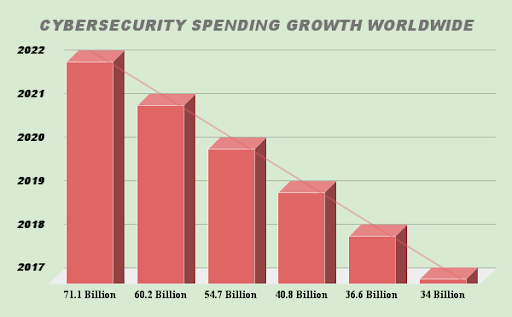“The only true wisdom is in knowing you know nothing.” As the ancient Greek philosopher Socrates once declared, pursuing knowledge often reveals how little we truly comprehend. This rings strikingly true when examining the cybersecurity challenges ushered in by the dawn of the quantum computing era. With quantum’s potential to crack current encryption standards and exponentially amplify computing power, we stand at the precipice of a computing revolution. Yet, with each revelation comes new threats that demand innovative solutions.
As quantum computers begin to transcend the boundaries of classical systems, our cyber fortresses face an uncertain future. According to experts, “quantum computing is one of today’s most complex and critical emerging technologies. While it promises immense benefits, the risks cannot be ignored.” We must rethink encryption, authentication, and data integrity through a quantum lens to navigate this maze.
Though the path forward remains obscured in uncertainties, the quantum realm beckons our best and brightest minds. We have merely scratched the surface of this computational frontier. But with diligence, collaboration and vision, a new era of cybersecurity awaits. The time has come to reimagine defence in the quantum age.
Decryption Apocalypse Threatens All Widely Used Cryptography
Quantum computers can easily break the public critical infrastructure underpinning most encryption protocols securing online transactions, communications, and identity systems. Whether Transport Layer Security (TLS), Secure Sockets Layer (SSL) or Advanced Encryption Standard (AES), quantum algorithms rapidly compromise mathematical problems on which these standards rely.
Retrospective decryption also unlocks decades of confidential transmissions. According to experts, the impending “decryption apocalypse” offers criminals unparalleled advantages. Without quantum-safe industrial cybersecurity preparations in place, critical infrastructure like utilities, transportation, healthcare, and other industrial systems will be exposed to catastrophic risks.

Holistic Controls Key as Threat Horizon Expands
Identity and access management (IAM) controls take on renewed importance in the quantum era. Converging authentication policies, session oversight, and user behaviour analytics fortify monitoring capabilities against abnormal use and emerging attack vectors.
Orchestrating context-aware access controls, predictive risk scoring and just-in-time privileged permissions also minimize insider threat capabilities if encrypted credentials are stolen. Implementing robust protections holistically combats expanding exposure.
Talent Pipeline Prioritization Critical
Quantum introduces vast skill demands. Constructing teams well-versed in post-quantum cryptography, speciality programming, and advanced algorithms is vital for defence readiness. While partnerships temporarily bridge gaps, cultivated internal competencies grant strategic advantages.
Those able to attract specialized professionals and dedicate proper funding have an edge. Building realistic quantum readiness roadmaps over 3-5 years enables resilience while the field grows.
Quantum Security Team Key Specializations
Quantum Cryptography
Enables highly secure communication channels that could be used for sensitive applications such as financial transactions, government communication, and secure data transfer in various industries. This is achieved through the use of:
- Quantum key distribution
- Quantum random number generation
- Quantum-safe hybrid encryption
- Quantum signature schemes
Post-Quantum Cryptographic Protocols
Designed to be secure against attacks by quantum computers. Includes:
- Lattice-based cryptography – relies on the hardness of some mathematical issues related to lattices.
- Hash-based signatures – rely on cryptography hash functions to achieve security.
- Code-based cryptography: This approach is based on error-correcting codes and the difficulty of decoding linear codes without the necessary information.
- Multivariate quadratic equations rely on the computational difficulty of solving systems of equations, which is believed to be resistant to quantum attacks.
- Isogeny-based cryptography – relies on the mathematical properties of isogenies, which are mappings between elliptic curves.
- Symmetric-key cryptography– While asymmetric cryptographic schemes are most vulnerable to quantum attacks, specific symmetric-key cryptographic algorithms, such as symmetric encryption and message authentication codes (MACs), are believed to remain secure in the post-quantum era.
Quantum Programming Languages
- Q# – Pronounced as ‘Q sharp’, Q# provides a high-level, abstract syntax that allows developers to write complex quantum operations using familiar programming concepts.
- Qiskit – Developed by IBM, allows you to optimize quantum algorithms for specific hardware and provides a platform for research and education in quantum computing.
- Forest – Developed by Rigetti Computing, provides a full-stack solution for executing parametrically controlled quantum circuits, allowing for rapid prototyping of quantum algorithms.
- Cirq – Provides a flexible and intuitive interface for defining quantum circuits and gives direct access to Google’s Quantum Computing Service.
Quantum Algorithms
- Shor’s algorithm – Quantum algorithm for integer factorization- is the process of breaking down a composite number into its prime factors. Shor’s algorithm can factor large integers exponentially faster than the best-known classical algorithms, posing a potential threat to classical public-key cryptography systems such as RSA.
- Grover’s algorithm – Quantum search algorithm that can search an unsorted database of N items in O(√N) time, compared to O(N) time required by classical algorithms. It achieves this speedup through the use of quantum parallelism and amplitude amplification.
- Quantum Fourier Transform – Quantum analogue of the classical discrete Fourier transform. It forms the basis of many quantum algorithms, including Shor’s algorithm and quantum phase estimation. The QFT enables efficient manipulation of the phase information in quantum states.
- Quantum phase estimation – Used to estimate the eigenvalues of unitary operators. It is a key component of many quantum algorithms, including Shor’s algorithm and algorithms for solving linear systems of equations.
- Variational quantum eigensolver (VQE) – Finds the ground state energy of a quantum system. It is designed to run on near-term quantum devices and combines classical optimization techniques with quantum circuits to efficiently approximate the ground state energy.
- Quantum approximate optimization algorithm (QAOA) – Quantum algorithm for solving combinatorial optimization problems. It uses a parameterized quantum circuit to explore the solution space of the optimization problem and is suitable for implementation on near-term quantum hardware.
Subject matter experts across quantum-resistant cryptography, speciality programming proficiencies, and algorithm fundamentals are vital for securing complex systems against novel but unpredictable attack vectors.
Waiting for cedes initiative to attackers as decryption risks escalate. Prioritizing talent pipelines reduces disruption while strengthening strategic positioning.
Conclusion
As we march into the quantum computing era, new cybersecurity challenges arise that require innovative solutions. Because quantum computers can crack current encryption standards, we must develop new cryptographic methods resistant to these advances. However, this is just one piece of the puzzle. We must also rethink authentication, access controls, and network security to withstand the power of quantum attacks.
Ultimately, cybersecurity in the quantum age demands agility and collaboration across sectors. Governments, academia, and industry must work together to research and set up proactive security measures. Cyber experts should continuously monitor developments in quantum computing and adapt security postures accordingly. Ordinary citizens also have a role in being vigilant about cyber hygiene and pressuring institutions to prioritize quantum-safe security.
The path forward has many twists and turns, but we can traverse this new cybersecurity maze with intelligent preparation, research, and adaptation. The quantum future offers risks and immense opportunities if we lay the groundwork today to construct sturdy, flexible safeguards for tomorrow. By banding together across borders and disciplines, we can craft an integrated cybersecurity strategy to protect our data and networks in the dawning quantum period.
FAQs
How long until quantum poses an existential threat?
Most experts believe large, error-corrected quantum computers capable of breaking modern cryptography are at least 8-12 years away. However, rapid incremental innovations like quantum sensing and communication accelerate potential timelines.
What systems face the most significant risks?
Public key infrastructure, including authentication systems and SSL/TLS certificates securing websites and connections, face decryption vulnerabilities. Confidential data transmission is largely exposed.
How much should my organization invest?
At a minimum, funding full-scale encryption upgrades, access control modernization, and dedicated quantum security teams over 3-5 years is recommended. More complex organizations may require tens of millions in quantum readiness investments.
